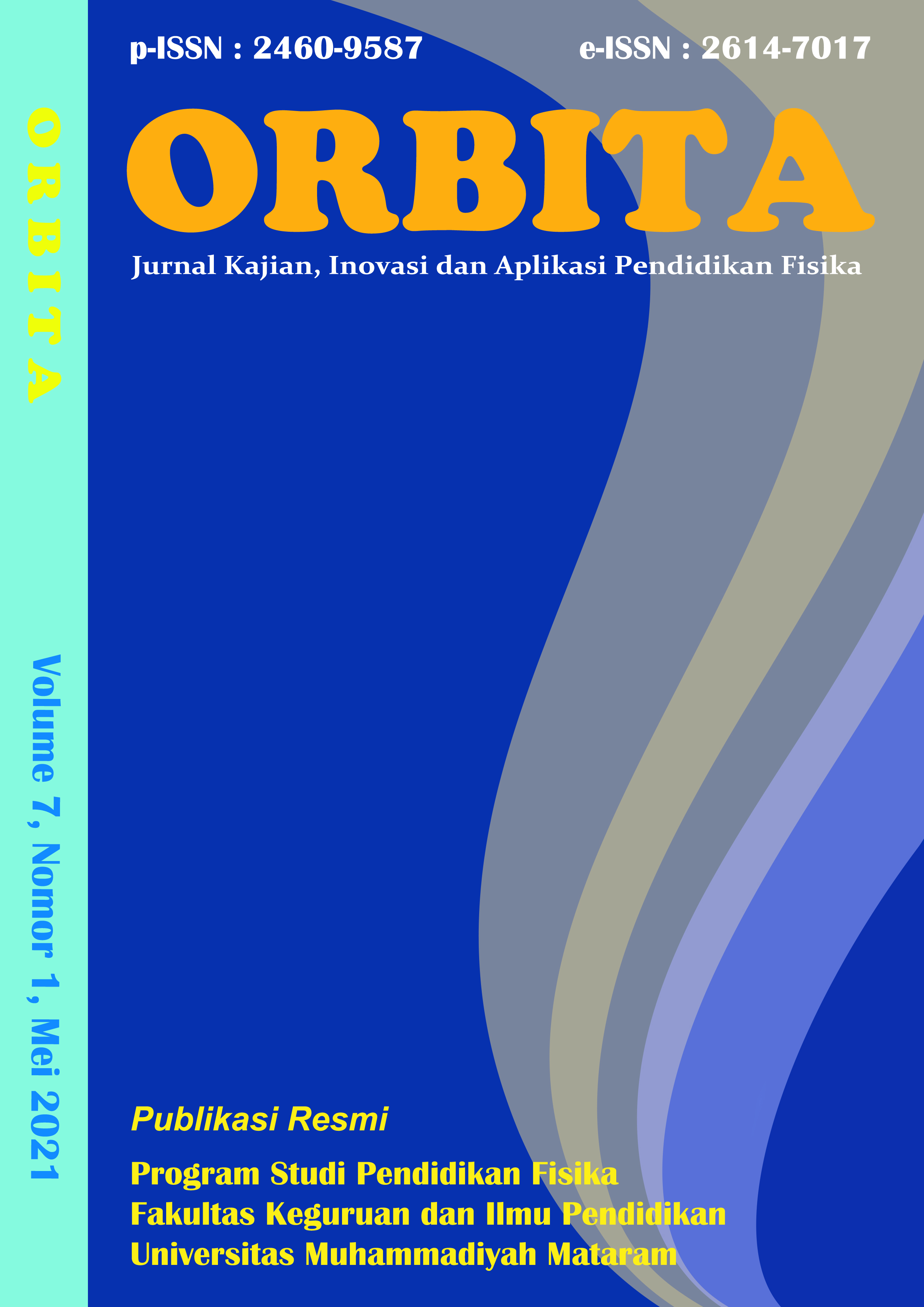PENGEMBANGAN BRIKET BERBAHAN DASAR ECENG GONDOK DAN ABU SEKAM PADI SEBAGAI ALTERNATIF BAHAN BAKAR OVEN TEMBAKAU
DOI:
https://doi.org/10.31764/orbita.v7i1.3444Keywords:
briquettes, water hyacinth, rice husk ash, tobacco oven.Abstract
ABSTRAK
Tujuan dari penelitian ini yaitu untuk menghasilkan briket sebagai bahan bakar alternatif oven tembakau. Briket yang dihasilkan ada dua yaitu briket berbahan Dasar Eceng Gondok dan Briket berbahan dasar abu sekam padi. Kedua briket dibuat dengan variasi komposisi bahan perekat tepung tapioka 10% dan bahan dasar 90% untuk mendapatkan hasil briket terbaik untuk diterapakan sebagai alternatif bahan bakar pada proses pengovenan tembakau masyarakat.Selain variasi bahan dasar dilakukan juga variasi pada geometri pelet yang meliputi kotak pejal, kotak berongga, tabung pejal, dan tabung berongga. Masing-masing geometri dicetak dengan variasi tekanan 10 PSI, 20 PSI, dan 30 PSI. Hasil penelitian menunjukkan bahwa briket dengan bahan dasar abu sekam padi menghasilkan kalor yang lebih tinggi dibandingkan dengan briket berbahan dasar eceng gondok. Geometri pelet briket berongga menghasilkan kalor yang lebih tinggi dibandingkan dengan briket pejal. Geometri kotak berongga mengasilkan kalor terbaik dibandingan dengan geometri tabung pejal. Tekanan optimum dalam pembuatan pelet briket dihasilkan pada tekanan 20 PSI.
Â
Kata kunci: briket; eceng gondok; abu sekam padi; oven tembakau.
Â
ABSTRACT
The purpose of this research is to produce briquettes as an alternative fuel for tobacco ovens. There are two briquettes produced, namely briquettes made from water hyacinth and briquettes made from rice husk ash. The two briquettes were made with a variation of the composition of 10% tapioca starch adhesive and 90% base material to get the best briquette results to be applied as an alternative material in the community tobacco oven process. In addition to variations in the basic material, variations in pellet geometry were also carried out, which included solid boxes, hollow boxes, solid tubes, and hollow tubes. Each geometry is printed with a pressure variation of 10 PSI, 20 PSI, and 30 PSI. The results showed that briquettes made from rice husk ash produced higher heat than water hyacinth briquettes. Hollow briquette pellet geometry produces higher heat compared to solid briquettes. Hollow box geometry produces the best heat compared to solid tube geometry. The optimum pressure in the manufacture of briquette pellets is produced at a pressure of 20 PSI.
Â
Keywords: briquettes; water hyacinth; rice husk ash; tobacco oven.
References
Aljarwi, M. A., Pangga, D., & Ahzan, S. (2020). Uji Laju Pembakaran Dan Nilai Kalor Briket Wafer Sekam Padi Dengan Variasi Tekanan. ORBITA: Jurnal Kajian, Inovasi
Dan Aplikasi Pendidikan Fisika, 6(2), 200. https://doi.org/10.31764 /orbita. v6i2. 2645
Ariyanto, E., Karim, M. A., & Firmansyah, A. (2014). Biobriket Enceng Gondok (Eichhornia Crassipes) Sebagai Bahan Bakar Energi Terbarukan. Reaktor, 15(1), 59. https://doi.org/10.14710 /reaktor.15. 1.59-63
Asri, S., & Indrawati, R. T. (2018). Pengaruh Bentuk Briket Terhadap Efektivitas Laju Pembakaran. Jurnal Penelitian Dan Pengabdian Kepada Masyarakat UNSIQ, 5(3), 338–341. https://doi.org/10.32699/ppkm.v5i3.481
Jamilatun, S. (2012). Sifat-Sifat Penyalaan dan Pembakaran Briket Biomassa, Briket Batubara dan Arang Kayu. Jurnal Rekayasa Proses, 2(2), 37–40. https://doi.org/10.22146/jrekpros.554
Lalu Muhammad Alfian R, Sukainil Ahzan, D. S. B. (2020). The Effect of the Type and Composition of the Adhesive on the Physical Properties and the Rate of Combustion Hyacinth Biobriquettes No Title. Lensa Kependidikan Fisika, 8(2), 85–92.
Lintang Pratama, Dwi Pangga, D. S. B. P. (2020). Quality Analysis of Briquettes based on Waterding with Variation of Pressure and Pellet Geometry to Water Content and Value of Calories. Lensa Kependidikan Fisika, 8(2), 55–62.
Nurlela. (2015). Briket BatuBara dengan Penyulut Enceng Gondok dengan Perekat Tapioka. Media Teknik, 12, 18.
Pangga, D., & Ahzan, S. (2019). Pengembangan Eceng Gondok sebagai Bahan Dasar Pembuatan Briket Sumber Energi Alternatif. 24–25.
Patabang, D. (2012). Karakteristik Termal Briket Arang Sekam Padi Dengan Variasi Bahan Perekat. Jurnal Mekanikal, 3(2), 286–292.
Sulistyaningkarti, L., & Utami, B. (2017). Making Charcoal Briquettes from Corncobs Organic Waste Using Variation of Type and Percentage of Adhesives. JKPK (Jurnal Kimia Dan Pendidikan Kimia), 2(1), 43. https://doi.org/10.20961/jkpk.v2i1.8518
Supatata, N., Buates, J., & Hariyanont, P. (2013). Characterization of Fuel Briquettes Made from Sewage Sludge Mixed with Water Hyacinth and Sewage Sludge Mixed with Sedge. International Journal of Environmental Science and Development, April 2013, 179–181. https://doi.org/10.7763/ijesd.2013.v4.330
Downloads
Published
Issue
Section
License
The copyright of the received article shall be assigned to the journal as the publisher of the journal. The intended copyright includes the right to publish the article in various forms (including reprints). The journal maintains the publishing rights to the published articles.
ORBITA: Jurnal Pendidikan dan Ilmu Fisika is licensed under a Creative Commons Attribution-ShareAlike 4.0 International License.

